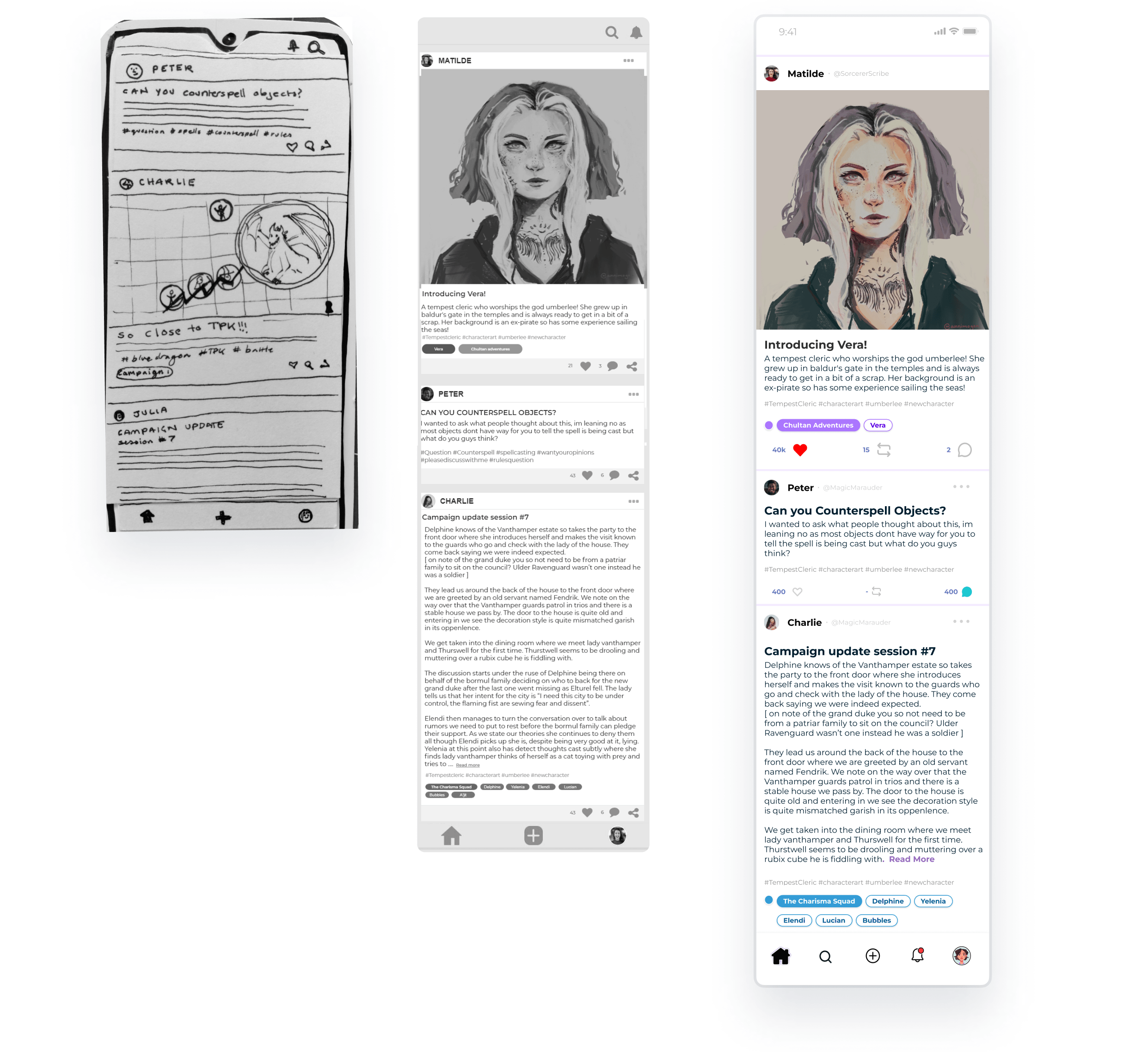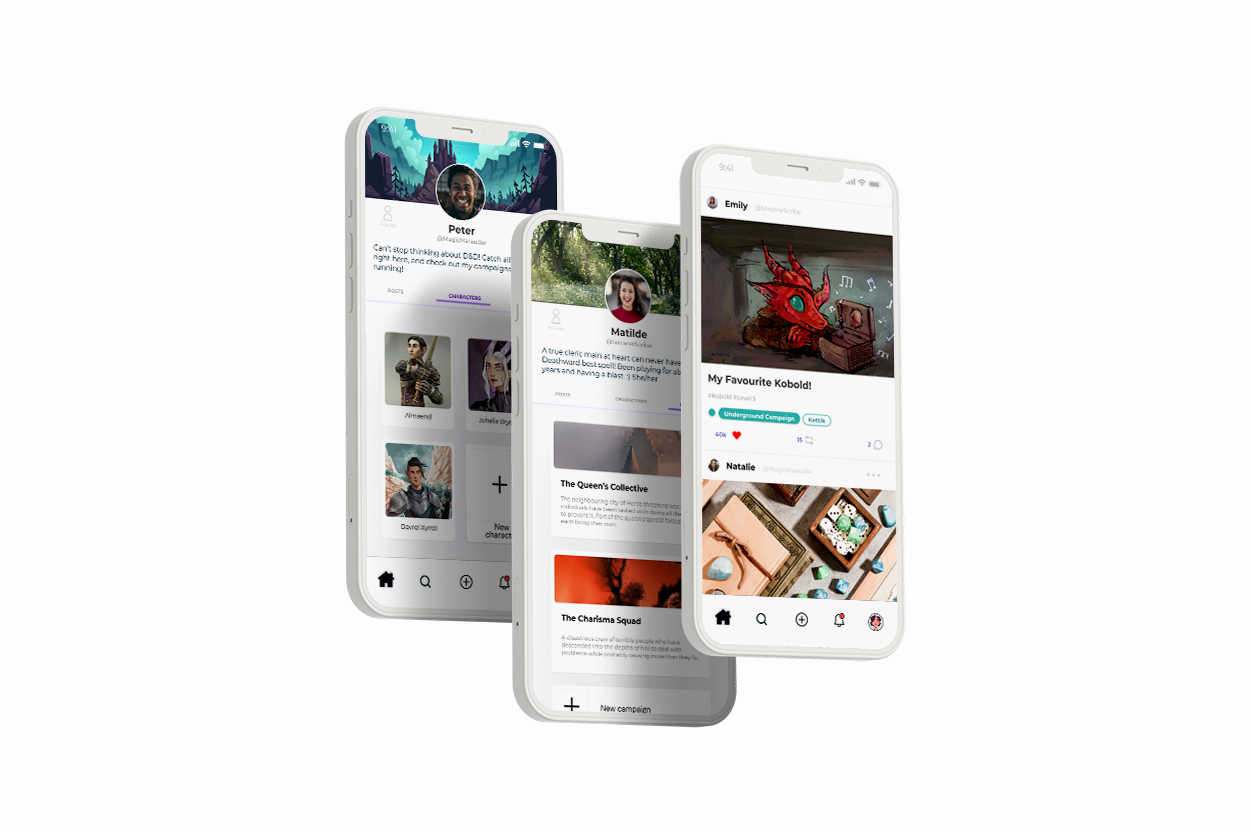
D&D creates a space for immersive storytelling and fantastical adventures. As part of a university project, I undertook the challenge of designing a user-centric application aimed at providing a dedicated social media platform for D&D enthusiasts to share and discuss their unique adventures.
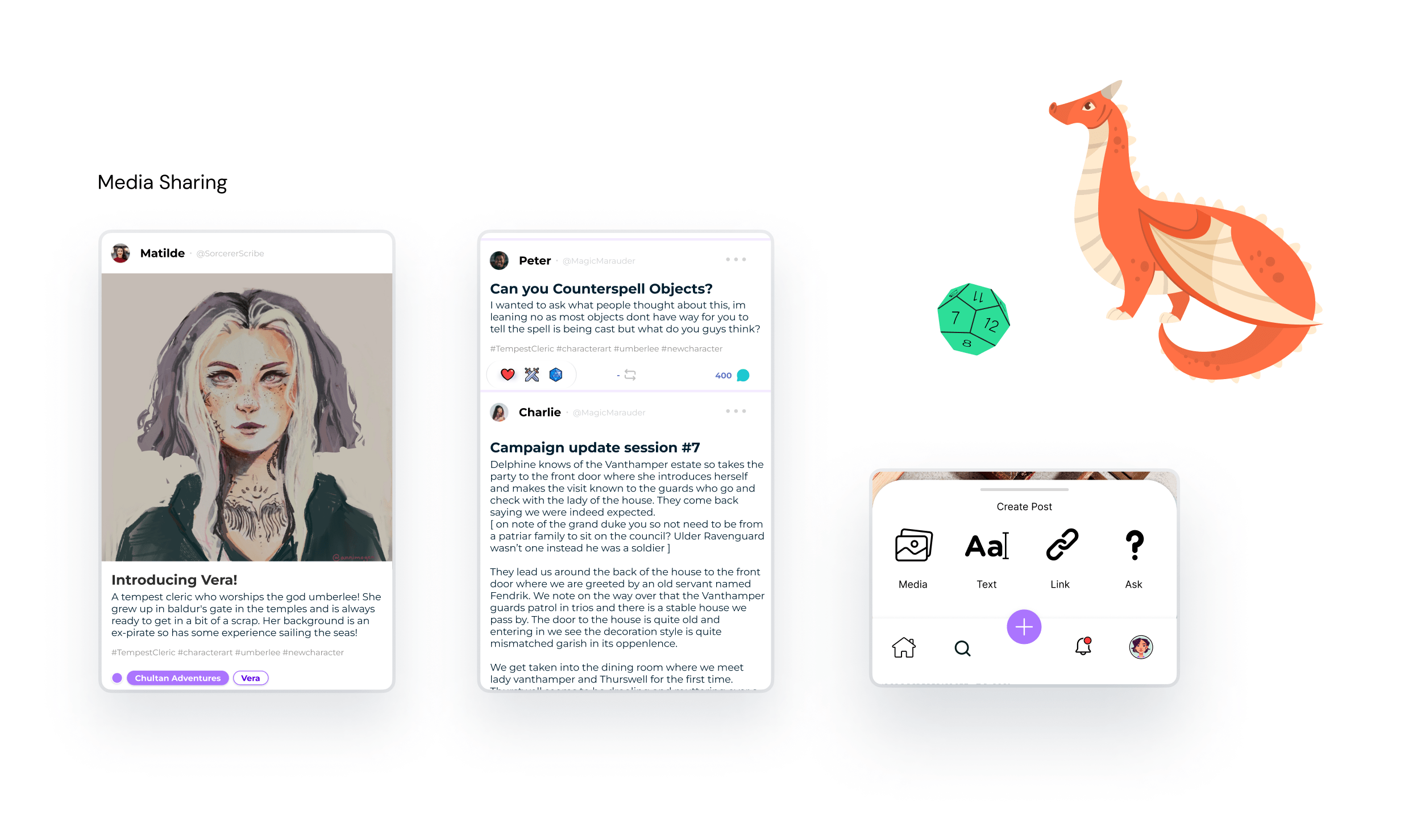
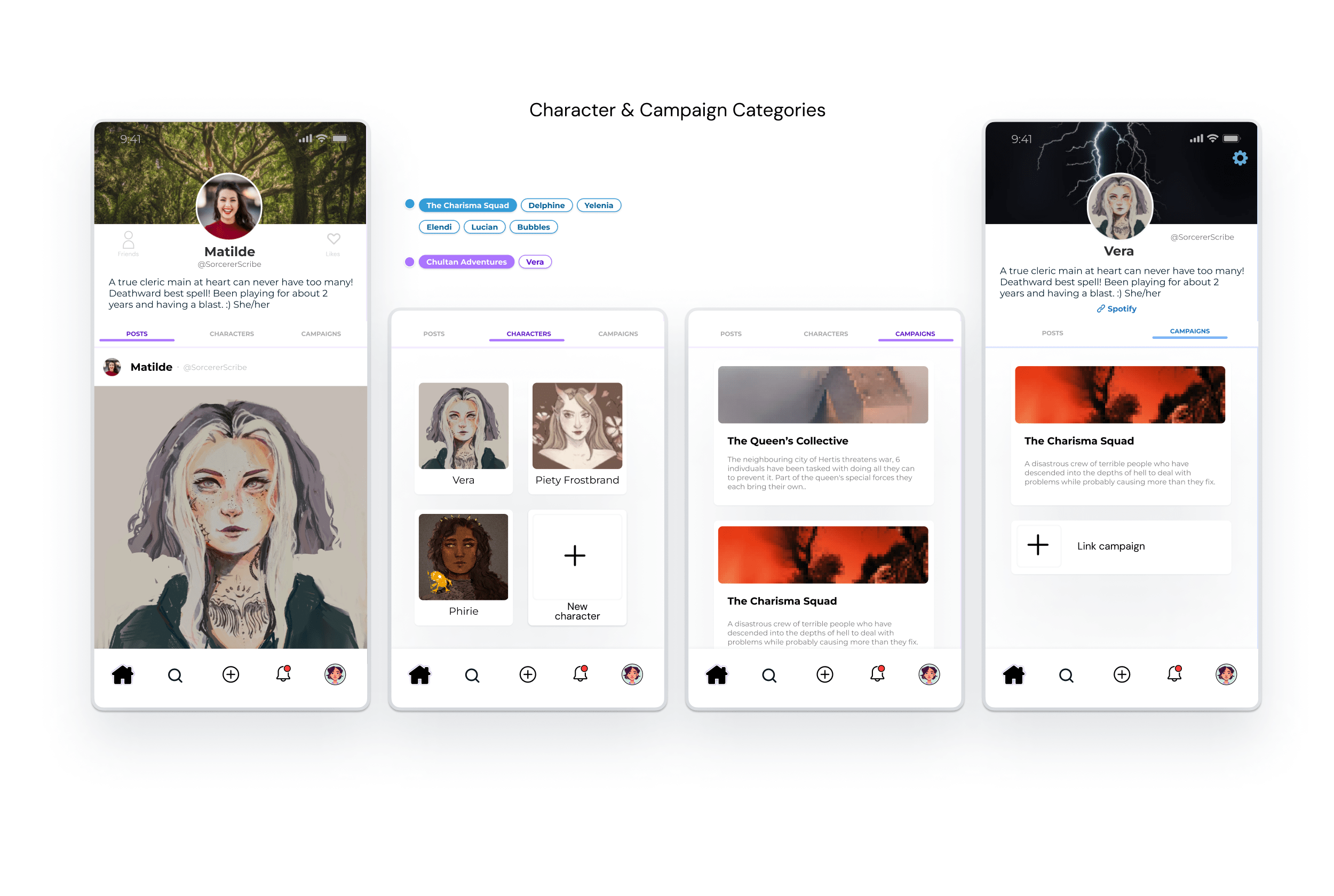

Research was key in catering this application the its target audience. It aligned expectations and design requirements. I compiled data around the D&D user base, via published statistics and then I ran a survey of a local D&D community paired with 4 semi-structured user interviews.
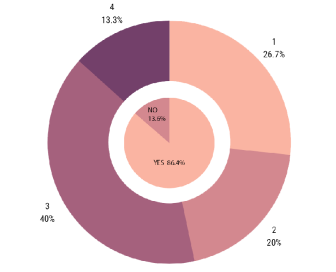

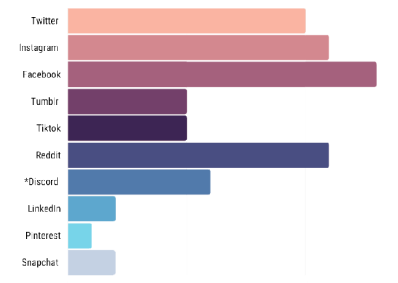
Using research findings, I moved to design personas to represent the key audience types. From here I created Scenarios, uses cases and task flows too better understand the different requirements and steps that need to built.
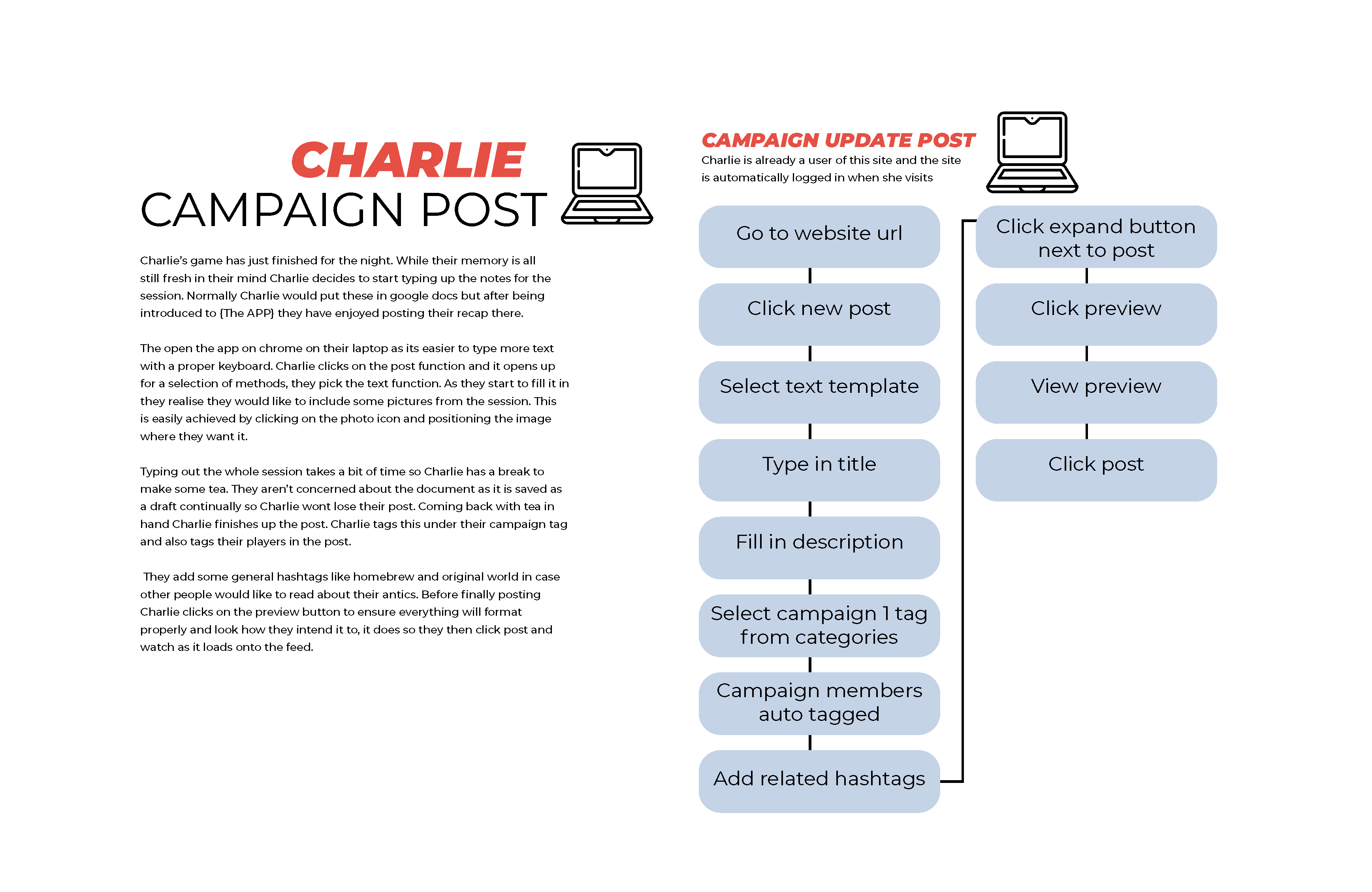
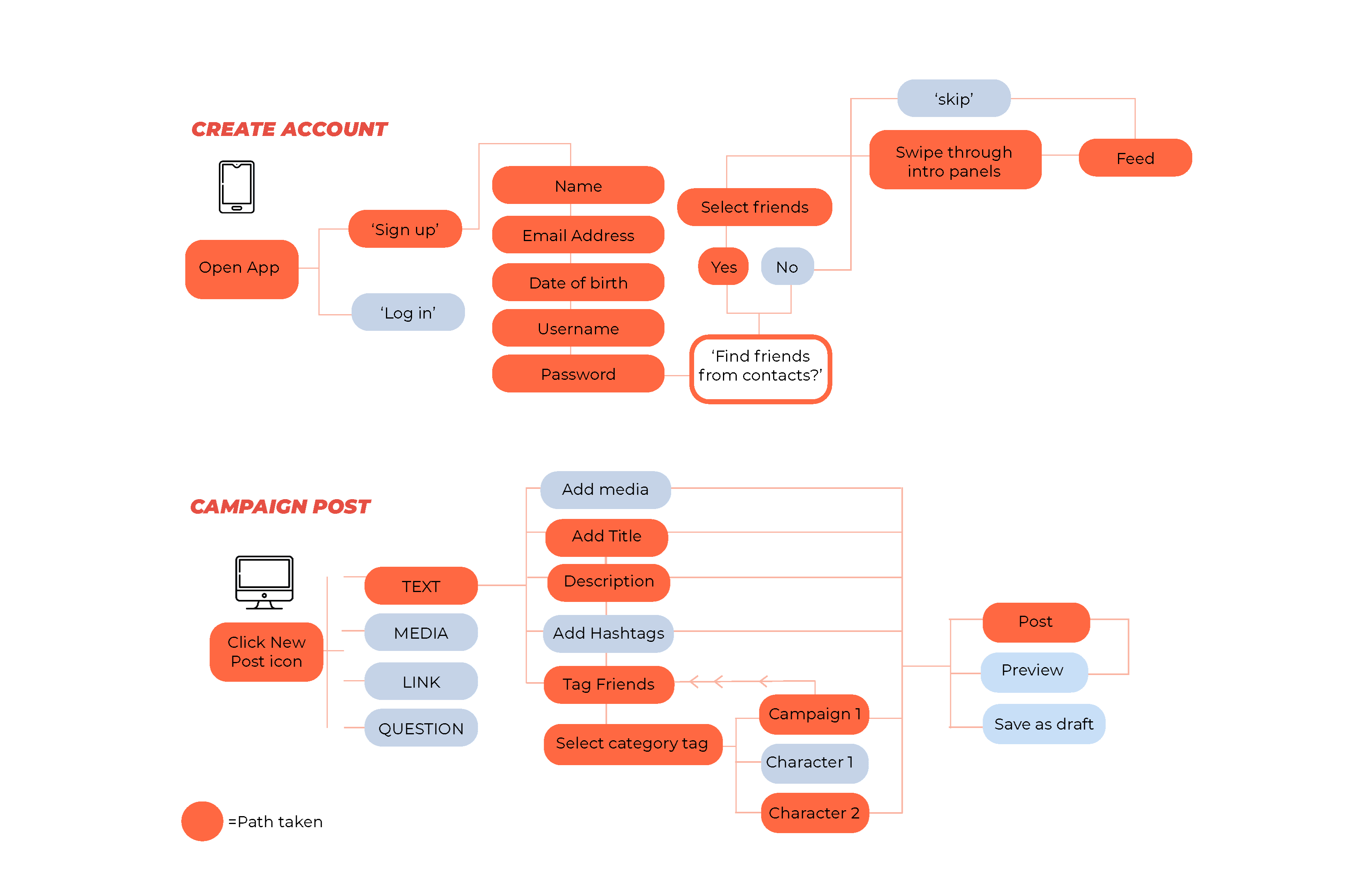
Paper Prototyping
To test these flows against user expected actions, I started with paper prototypes. These allowed me to quickly adapt to user interactions without the need for more complex digital prototyping variables.
Tasks to test
1: sign up
2: Log in
3: Create post
4: Create campaign
5: Edit character
6: Scroll through feed
7: Comment on post
8: Check notifications

Refinement
Each stage of user testing provided more feedback that was implemented into the Final Design.
